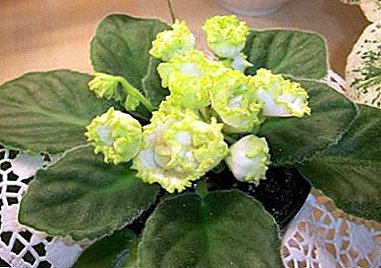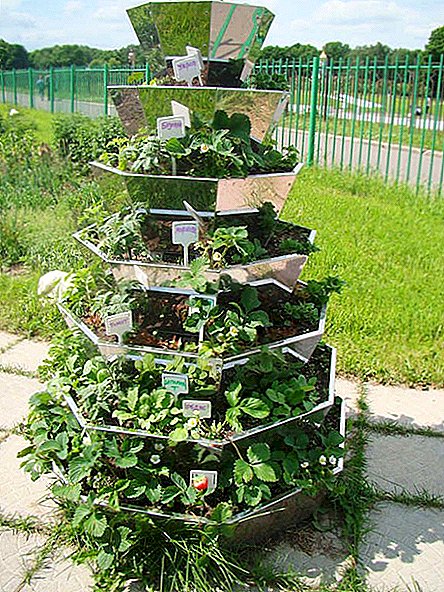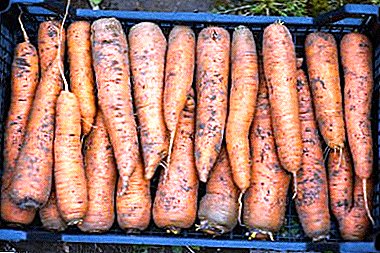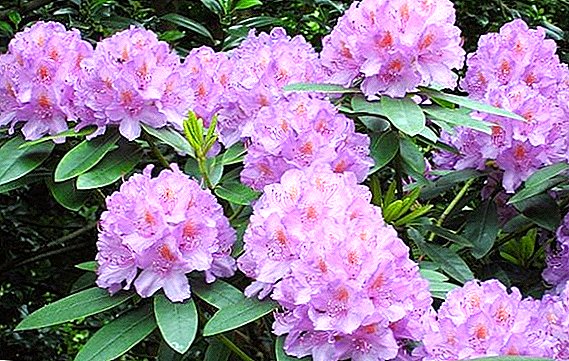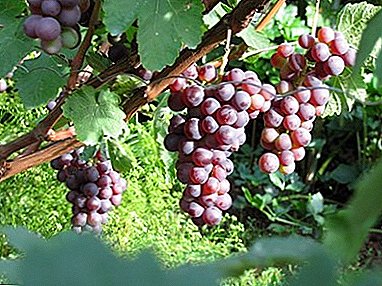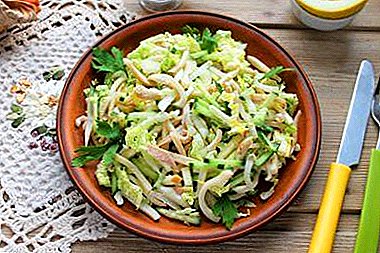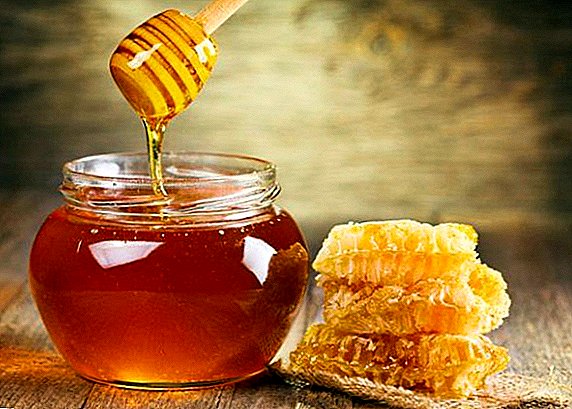 Honey is a very valuable product and is used not only in nutrition, but also in medicine and cosmetology. In order for its effect on the body to be positive, one should pay attention at the time of purchase to its properties.
Honey is a very valuable product and is used not only in nutrition, but also in medicine and cosmetology. In order for its effect on the body to be positive, one should pay attention at the time of purchase to its properties.
How to check the quality of honey? The answer to this question is simple. The most accurate results will give a laboratory analysis. But checking its taste, color and other characteristics with the use of special tools also gives good results.
Unscrupulous sellers sometimes try to hide the signs of a damaged product or give the product a more appetizing look by mixing in various substances. To protect yourself from this, you need to know how to recognize natural honey and how you can check it is natural or not.
Checking honey for quality and naturalness by eye
You can inspect honey not only at home, but also directly at the point of sale. When buying bee products, you should know the signs of natural honey and not get caught up with falsification.

Taste
The first diagnosis of honey is carried out by testing for naturalness by testing and evaluating its taste. The taste should be pleasant, with burnedwe learn aftertaste in a throat. If the taste has a hint of caramel, then most likely the product yielded to thermal heating. Sugar sweetness indicates the addition of sugar.
Did you know? In order for one bee to collect nectar for 100 grams of finished products, it is necessary to fly 46 thousand kilometers.
Colour
The color of the creation of bees depends on the plants from which it was collected. Summer flower varieties have a light yellow color, lime - amber, buckwheat - brown. Regardless of color, a quality fresh product has transparent structure and does not contain precipitation.
Smell (aroma)
The natural product of beekeeping has a pleasant smell and fragrant aroma, with nothing comparable. Counterfeit does not smell. The fragrance depends on the plant from which it is collected. Even an inexperienced consumer can distinguish buckwheat and lime honey by its taste and aroma. When buying, you should pay attention to the fact that the flavor does not contain the smell of smoke, caramel and fermentation.

Density and viscosity
Viscosity is an important criterion in determining its maturity. Mature product contains 18% water, but not mature - from 21% and above. If honey contains 25% of water, then its viscosity will be six times less than that of mature, therefore it is easy to determine this parameter visually. Observations should be carried out at a temperature not lower than 20 degrees.
Learn about the beneficial properties of honey collected from different plants: rapeseed, pumpkin, dandelions, phacelia, coriander.
For this, a tablespoon of fresh bee dessert is turned over with quick circular movements. If it is screwed onto a spoon, then it is mature; if it flows down, it is not. The mature product forms long yarns when draining from a spoon and lies on the surface in the form of a small elevation.
However viscosity also depends on plantsfrom which it is collected. This must be taken into account. Acacia and clover nectar are very liquid. Linden, buckwheat and cypraea are also considered liquid.
Consistency
The consistency of a high-quality bee product is uniform and tender. Its drop is easily rubbed between the fingers and absorbed into the skin. Falsification of this ability can not boast. It usually remains on the fingers in the form of lumps.
Important! Crystallization of various honey is a natural process, and its rate depends on the type of product and the temperature of the content. The ratio of fructose and glucose in the product is one of the parameters of the intensity of crystallization. A high fructose content indicates slow crystallization.
Checking honey for naturalness with the help of available tools
Consider ways to check the honey, using the available tools.
Yoda
Honey is checked with iodine for the presence of flour and starch impurities. To do this, prepare its solution with water in the ratio 1: 2 and add a few drops of iodine. If the solution changes color to blue, then impurities exist, if the color does not change - there are no impurities.
Vinegar
Using acetic essence, you can determine the presence of an admixture of chalk. To do this, dissolve it in water (1: 2) and in the presence of sediment add a few drops of acetic essence. If as a result of a chemical reaction, the solution began to foam, then this indicates carbon dioxide evolution, therefore, an admixture of chalk exists. In the absence of acetic essence, you can use simple vinegar, but its dose must be increased to 20-25 drops.
It is interesting to read about the role of the drone in the bee family.
Liquid ammonia
Using ammonia, you can determine the admixture of starch syrup in the product. To do this, mix it with water in a 1: 2 ratio and add a few drops of ammonia. After mixing, according to the results of the experiment, we can conclude about the presence of additives. The brown color of the solution with sediment indicates the presence of molasses.

Milk
With the help of fresh milk, you can identify counterfeit mixed with sugar. If you dissolve a teaspoon of bee product in hot milk and it coagulates, this sign indicates the addition of sugar to the product.
Important! A more accurate test of honey for sugar is carried out using silver nitrate (lapis). You can find it in the pharmacy. In a 10% aqueous solution of the product of bees add drops lapis. If we observe turbidity around drops and a white precipitate, the solution contains sugar.
Water
Checking honey with water is the easiest and most original. It determines the presence of impurities in the product. To do this, pour water into a transparent glass beaker and add 1 tsp. honey The solution is stirred until homogeneous. A quality product should dissolve completely. The solution should be cloudy, but without sediment. If a precipitate falls to the bottom - this indicates the presence of impurities.
A piece of bread
The content of sugar syrup in the product can be determined using a slice of bread. To do this, pour it with honey and leave for 10 minutes. The softening of the bread will indicate the addition of syrup, the previous density of bread speaks of a quality product.
Honey is not the only healthy product that bees give us. Also valuable are: beeswax, pollen, royal jelly, bee venom, propolis.
Paper sheet
To determine the maturity of the product is often used a sheet of paper or ordinary toilet paper. To do this, a large drop of honey is dropped on it and after 20 minutes they evaluate the result. If around a drop of paper on paper formed a wet trace up to 1 mm thick, then honey is mature, if the thickness of the trace is much larger, then such a product is better do not buy.
Stainless steel
To determine the impurities using hot stainless wire. If after immersion in a product its surface remains clean, this indicates its good quality. In the case of sticking of different particles, the honey product has impurities.
Important! Honey should not be heated above 50 degrees, otherwise it will lose all the useful properties.
Chemical pencil
Before you check honey with a chemical pencil, you need to know that its action is based on a change in color when it comes into contact with moisture. You need to dip the pencil in the bee dessert and draw conclusions on the result of the reaction. If the pencil has not changed color, there is no admixture of sugar syrup, and honey is mature.
Other ways to check the quality of honey
To determine what kind of natural honey, and what is not, there are many ways, but 100% confidence in the correctness of the results does not exist. Consider those that seem most revealing.
Heating up
How to distinguish natural honey from fake with the help of heating? We put a small jar with a tablespoon of bee products in a water bath and at a temperature not higher than 45 degrees we warm up for 8-10 minutes. Open the lid and evaluate the smell and aroma.
Lack of smell - the first sign of poor-quality product. If the heating in a water bath is carried out for about an hour, then the natural honey should stratify, and the counterfeit will remain homogeneous.
By weighing
A simple way by which you can determine the density of honey and, therefore, the water content in it. It should be noted, the less water, the density is higher. Glass jar with a capacity of 1 liter is weighed. 1 kg of water is poured into it and the level of the lower meniscus is marked on the glass.
Later the water is poured, and the jar is dried. Next, pour the purchased product into the jar to the mark and weigh it. The difference between dry and filled cans determine the mass of a substance, which is equal to its density. According to the table set it water content.
| Honey weight, kg | Water content,% |
| 1,433 | 16 |
| 1,436 | 17 |
| 1,429 | 18 |
| 1,422 | 19 |
| 1,416 | 20 |
| 1,409 | 21 |
| 1,402 | 22 |
| 1,395 | 23 |
| 1,388 | 24 |
| 1,381 | 25 |

Did you know? The body of Alexander the Great after death for preservation during the return from the campaign was immersed in honey. This product has prevented decomposition for a long time.
How to store honey at home
Preservation of bee products is to prevent changes in the chemical composition, taste and nutritional qualities and therapeutic properties. It is necessary to observe temperature conditions. The best temperature is considered 5-10 degrees. In this temperature mode, honey can last up to three years.
At temperatures up to 20 degrees, preservation is reduced to a year, at temperatures up to 30 degrees - up to a month. Do not allow it to freeze. When storing it is necessary to take into account that this is a hygroscopic substance. It absorbs strong odors well. Therefore, it is necessary to store in closed form.
For the same reason, you need to pick up the dishes for storage. Bee dessert can not be stored in metal utensils. As a result of chemical reactions, this will lead to an increase in the content of heavy metals in the product.
It should be stored in glass, earthenware, ceramic, porcelain or special wooden utensils. Wooden dishes made of coniferous, aspen, oak can add odors to honey. Most well honey is stored in sealed comb. In wax cells of honeycombs, it fully preserves aromatic and biologically active substances.

The choice of high-quality honey is a special art, which can only be comprehended with experience. Buy this valuable product from familiar beekeepers. Then you have to focus only on the choice of taste characteristics.


